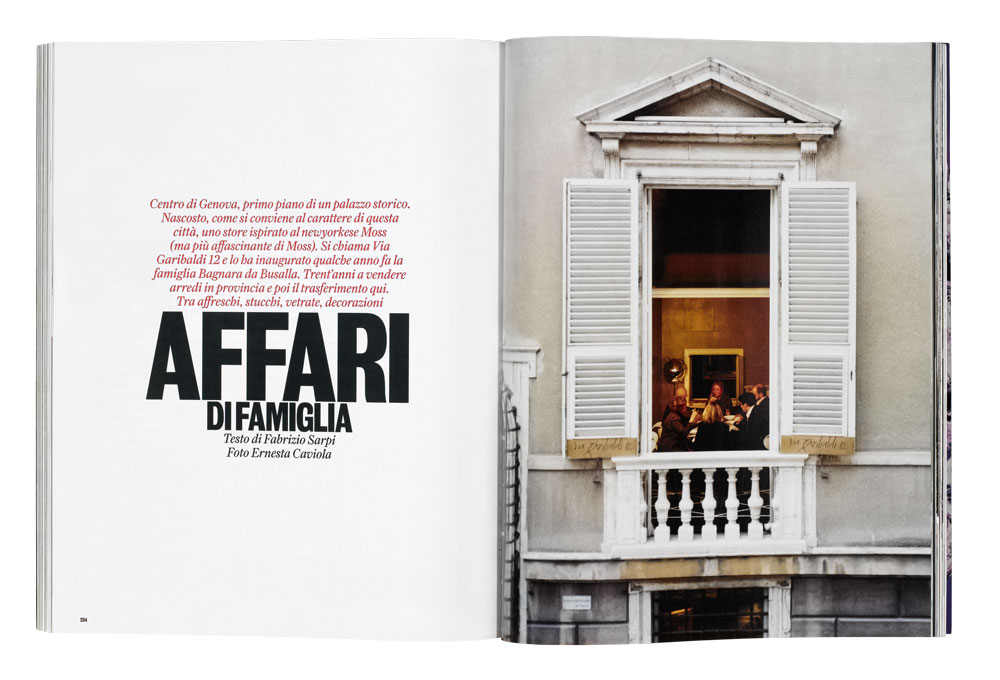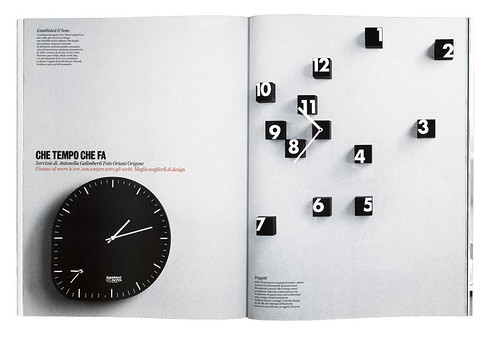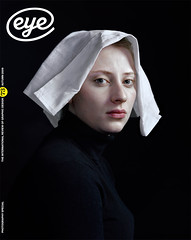Autumn 2009
Art and art direction – Kuchar Swara
The relationship between art directors and photography has developed in myriad ways alongside changes in fashion, taste and technology. Here we profile four very different practitioners: editorial designer Kuchar Swara, who collaborates regularly with photographers such as Nigel Shafran and Coppi Barbieri; Jens Gehlhaar (of directors’ collective Brand New School), who moves effortlessly between moving image campaigns, still photography and CGI; Thomas Lenthal, creative director for luxury fashion brands and his own magazine Paradis; and Daniel Eatock, whose approach to photography provides a provocative link between conceptual art and an objective, ‘vernacular’ approach to snapshot culture. All four have plenty to say about the place of photography and photographers in their working lives.

Kuchar Swara made his mark with his assured design of Italian art and architecture magazine Case da Abitare, while at Winkreative, whose principal, Tyler Brûlé, spearheaded a redesign of the title in April 2008. Once Brûlé had devised a precise, commercially focused structure for the title, Swara swiftly put their plan into action, with strong typography, a crisply delineated grid and an approach to art direction that integrates a casual, contemporary detachment with the expansive gorgeousness long associated with Italian brands and publishing.
At the time of Case’s relaunch, MagCulture’s Jeremy Leslie described it as ‘an almost idealised version of early Modernist graphic design,’ noting that it was worth obtaining ‘to admire a rare attempt to apply strong, intelligent graphic design to an editorial project.’
Since that time Swara – working alongside creative director Brûlé, photo director Stephen Ledger-Lomas and editor Francesca Taroni – has ramped the look and feel of Case to another level, establishing strong relationships with photographers such as Nigel Shafran, Ernesta Caviola, Thomas Brown, Oriani Origone and Coppi Barbieri.
In Shafran’s photos for the ‘Country City’ feature, which shows designer items in a domestic context, there’s an easy confidence that chimes with the editorial design. Swara enthuses: ‘These are really expensive chairs, but they’re in normal settings.’ He credits the influence of Cornel Windlin’s Vitra catalogue – ‘that informal way of showing something that’s incredibly pricey, very precious, with a huge legacy of design, but not being too precious about it.’ (See Critique, Eye 56.)
The Portfolio section in the feature well of Case da Abitare features dramatic ‘macro’ photography of household items, including door handles, lighting and faucets. Photograph by Oriani Origone.
Top: opening spread for a feature about family-run furniture business photographed by Ernesta Caviola, April 2008. ‘She uses a large-format camera and delivers her photogrpahs as big fat prints so you can scan them,’ says Swara, ‘She’ll only deliver one picture.’
In the Portfolio section of Case da Abitare, close-up photographs provide a dramatic change of pace: enormous door handles in one issue; Oriani Origone’s giant clock faces against unplastered wall surfaces in another. ‘We devised it as a tool to break up all the interiors. I like the idea of opposite, of contrasts.’
Swara, who was born in Iran in the early 1980s, came to London in 1990 and studied typography at the London College of Printing (LCP), may be typical of a generation that is happy to rummage through what Tom Wolfe once derided as the ‘big closet’ of history, deriving inspiration from 1960s masters such as Fleckhaus and Lubalin, the 1990s chic of Fabien Baron (see Eye 18) and several more contemporary influences.
But isn’t there a direct conflict between the glossy, Baron-like approach to fashion and Windlin’s prosaic Swiss hipness? Swara replies that he likes both. ‘We’re just greedy. Those two things are really nice. Both look good against each other – to suddenly have highly polished pictures in the right places, and then to have something different and complementary.
‘We try to give a more significant meaning to these beautiful objects, which are there to be enjoyed and lived with in everyday life.’
Swara’s generous, eclectic outlook reveals itself in his enthusiasm for the work of other art directors and photographers. Leafing through the pages of Monocle, W, Vogue, Numéro and Paradis with a critical eye, he seizes upon favourite examples of art direction and photography, such as Philip-Lorca diCorcia’s audacious (and endless) ‘Cairo’ feature for W; a Sølve Sundsbø essay (‘Corps á corps’) of lovers embracing; and Guido Mocafico’s lipstick spreads for Numéro.
‘It’s really, really trusting for an editor to give away this much real estate in a magazine for something that’s just one lipstick on each page! Advertisers love it,’ grins Swara. ‘I love the idea of this, too, and that informed what we did in Case da Abitare.’
First published in Eye no. 73 vol. 19 2009
Eye is the world’s most beautiful and collectable graphic design journal, published quarterly for professional designers, students and anyone interested in critical, informed writing about graphic design and visual culture. It is available from all good design bookshops and online at the Eye shop, where you can buy subscriptions, back issues and single copies of the latest issue.


